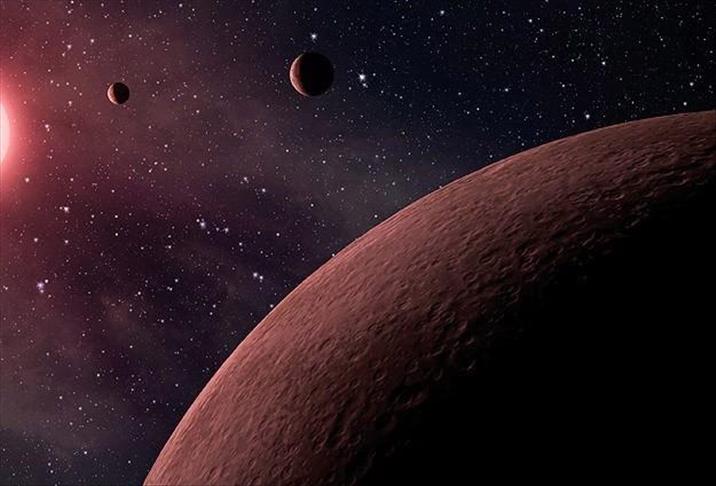Pluto home to flowing ice and alien weather
NASA reveals new data, gorgeous photos of far-away dwarf planet

By Barry Eitel
SAN FRANCISCO
NASA on Friday released startling new details about Pluto, including that the dwarf planet has Earth-like attributes including moving ice flows and weather patterns.
Astronomers have long thought that Pluto, discovered in 1930, was essentially an inert space object bordering on the frozen edge of the solar system. Since the agency’s New Horizons spacecraft began beaming back data last week after an encounter with Pluto on July 14, though, researchers believe that former theories -- and school textbooks -- need to be radically revised.
“We knew that a mission to Pluto would bring some surprises, and now -- 10 days after closest approach -- we can say that our expectation has been more than surpassed,” John Grunsfeld, NASA’s associate administrator for the Science Mission Directorate, told reporters. “With flowing ices, exotic surface chemistry, mountain ranges, and vast haze, Pluto is showing a diversity of planetary geology that is truly thrilling.”
New Horizons found that Pluto’s atmosphere is unexpectedly home to gaseous hazes of methane and hydrocarbons. These hazes layer and move like weather patterns on Earth. They also provide the particles that give Pluto its reddish hue -- which is somewhat of a non-sequitur compared to its freezing temperatures that reach -233 to -223 degrees Celsius (-387 to -369 degrees Fahrenheit).
“My jaw was on the ground when I saw this first image of an alien atmosphere in the Kuiper Belt,” said Alan Stern, principal investigator for New Horizons.
Scientists were also shocked to find ice flowing across Pluto’s surface similar to the way glaciers move across our planet’s colder regions. In fact, flowing ice has only previously been discovered on Earth and Mars. The Plutonian ice, which appears to be composed of nitrogen, carbon monoxide, and methane, point to recent geological activity on the dwarf planet.
New Horizons is currently 12.2 million kilometers (7.6 million miles) beyond Pluto, closing in on the edge of our solar system.
Also Friday NASA revealed a breathtaking photo of the “nighttime” side of Pluto, backlit by the sun like a halo.
Anadolu Agency website contains only a portion of the news stories offered to subscribers in the AA News Broadcasting System (HAS), and in summarized form. Please contact us for subscription options.

